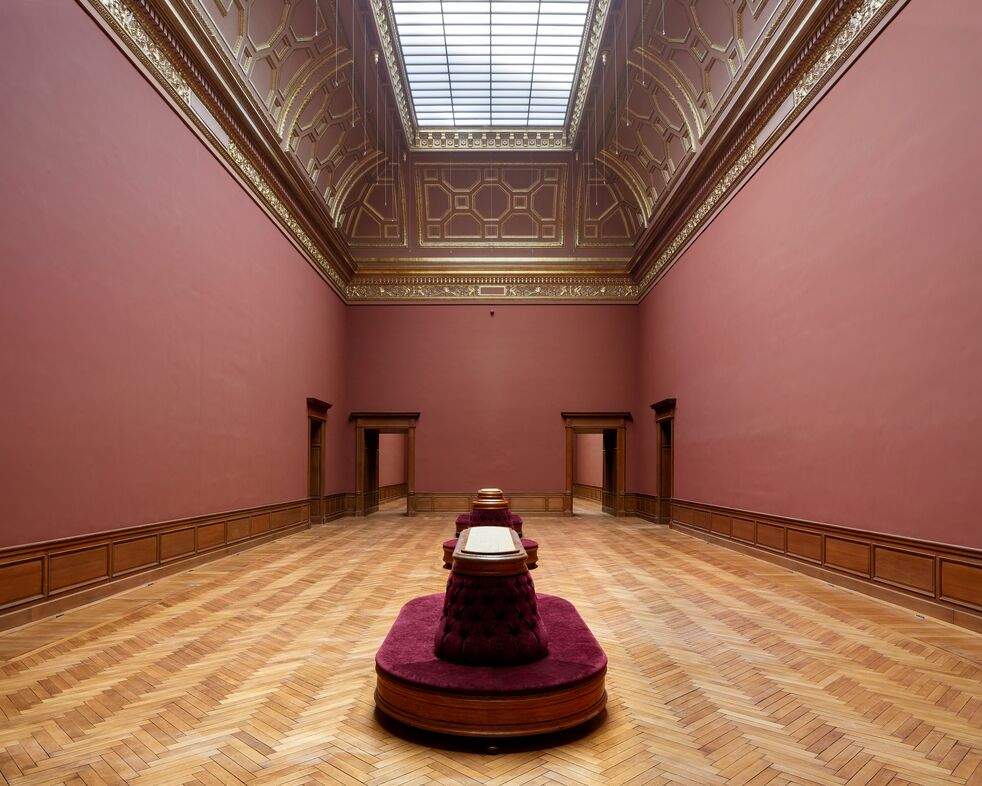Scheduled for September 25, 2022, is the reopening of the Koninklijk Museum voor Schone Kunsten Antwerpen (KMSKA), the Royal Museum of Fine Arts of Antwerp in Flanders, Belgium, which thus returns to open its doors to the public after nearly eleven years of closure for major renovations, and to display its seven centuries of art in a new guise.
The museum’s massive renovation and refurbishment project, awarded back in 2004 to the Rotterdam-based architecture firm KAAN but officially started with the closure of the spaces in 2011, included reconstructions and expansion of some areas, and was carried out in several phases, spread out over time. The work plan covered all parts of the museum starting with the exterior, with the restoration of the façade and roof with skylight and solar shading, the creation of a new mosaic at the entrance, the creation of a garden, and the transformation of four historic courtyards into museum spaces. It was precisely this last structural change that allowed for a 40 percent increase in exhibition space, and the creation of a new wing with unexpected lines, characterized by the predominance of the color white, with recesses and 198 skylights that let in daylight, and with a futuristic staircase with polished concrete steps, 40 meters long and overcoming a 22-meter difference in height. Consisting of 10 galleries, this area is distinguished by asymmetry related to heights, volumes and light entry, as opposed to the perfect symmetry of the historic building, which has also undergone renovations. Numerous, in fact, are the renovations made in its interior rooms, which, thanks to these interventions, have returned to their renowned beauty. The floors have been preserved as much as possible, the walls refreshed, and gold trim has been applied to the frames of the Rubens and Van Dyck Rooms.
As of September 25, 2022, it will therefore be possible to admire once again the collection, which includes works ranging from the 14th to the 20th century: the KMSKA’s collection is considered among the first in the world for the collection of works by the Flemish Primitives, but also of great significance are those from the Baroque period, up to and including the vast collection of modern art. Among the many masterpieces are those by Simone Martini (the wings of the Orsini polyptych are his), Antonello da Messina (the celebrated Crucifixion), Jan van Eyck, Rogier van der Weyden, Jean Fouquet (the very famous Madonna and Child, part of the Melun diptych, one of the most celebrated of the non-Italian Renaissance), Hans Memling (the Portrait of a Man), Peter Paul Rubens (the Venus frigida), Antoon van Dyck, James Tissot, James Ensor, Henry Van de Velde, George Grosz, Amedeo Modigliani (the Seated Nude), Günther Uecker, Rik Wouters, and René Magritte.
About 650 works were selected for the permanent exhibition from among the more than 8,400 paintings, sculptures, works on paper and objects. Major restoration (183 of which 131 were carried out directly on site and 53 externally) and conservation (6,475 treatments) were also carried out on this huge holdings. The organization of the collection was designed by dividing the works prior to 1880 into the historic building and the works after this date into the new section. James Ensor, whose collection at the KMSKA is the most important in the world, is the trait d ’union and will be present in both places. Inside, the rooms are not arranged in chronological sequence, by artist or style: the works are shown with a variety of thematic perspectives, “dynamic and stimulating,” according to the museum. There is also no shortage of rooms in the contemporary art spaces that host external loans and temporary exhibitions.
Moreover, the KMSKA is the only museum in Flanders with an adjoining Academic Institute, and its long history dates back to the 19th century (it opened in 1810, originating from the collections of the local Academy of Fine Arts). The renovation and refurbishment work also involved twenty-two contemporary artists for the artist residency project, which involves, for the duration of five years, direct contact with the collection in order to draw inspiration from the old masters and bring to life works spanning different artistic fields: painting, sculpture, texts, music, images and performances.
Pictured is an empty museum room. Photo by Karin Borghouts
 |
| The Antwerp Museum of Fine Arts will reopen in 2022 after 10 years of work |
Warning: the translation into English of the original Italian article was created using automatic tools. We undertake to review all articles, but we do not guarantee the total absence of inaccuracies in the translation due to the program. You can find the original by clicking on the ITA button. If you find any mistake,please contact us.